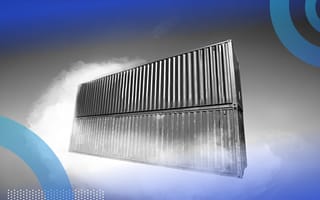Kubernetes is a powerful container orchestration tool that provides a variety of resources for managing containerized applications at scale. Two of the most commonly used resources are Kubernetes Deployment and Kubernetes StatefulSet.
Kubernetes StatefulSet vs. Deployment Explained
- StatefulSet: StatefulSet is a resource that manages a set of identical stateful pods. It’s useful for managing stateful applications that require stable network identities and persistent storage.
- Deployment: Deployment is a resource that manages a set of identical pods. It allows you to manage the state of your application so that the correct number of replicas are running at all times.
Both resources are designed to manage containerized applications, but they have some differences in their features and use cases. In this article, we’ll compare Kubernetes Deployment and Kubernetes StatefulSet, explore their differences and help you decide which one to use for your application.
What Is Kubernetes Deployment?
Kubernetes Deployment is a resource that manages a set of identical pods. It provides declarative updates for pods and their associated ReplicaSets. Deployment allows you to manage the desired state of your application and ensure that the correct number of replicas are running at all times.
Advantages of Kubernetes Deployment
Deployment provides the following benefits:
- Scalability: Deployment can scale up and down the number of replicas based on demand, ensuring that your application can handle increasing traffic loads.
- Rolling Updates: Deployment can update the pods in a rolling fashion, allowing you to perform updates without any downtime.
- Automatic Rollbacks: Deployments can automatically roll back to the previous version if an update fails, ensuring that your application remains available.
What Is Kubernetes StatefulSet?
Kubernetes StatefulSet is a resource that manages a set of identical stateful pods. StatefulSet is useful for managing stateful applications that require stable network identities and persistent storage. StatefulSet provides guarantees about the ordering and uniqueness of pod creation, deletion and scaling.
Advantages of Kubernetes StatefulSet
There are a few advantages to using StatefulSet in Kubernetes, including:
- Ordered pod creation: StatefulSet ensures that each pod is created in a specific order, allowing applications to rely on the order of pod creation for initialization tasks.
- Stable network identities: StatefulSet provides stable network identities for each pod, making it easy to communicate with specific pods in the set.
- Persistent storage: StatefulSet can manage the creation and deletion of persistent volume claims (PVCs), ensuring that each pod has a unique persistent storage.
What’s the Difference Between Kubernetes StatefulSet and Deployment?
There are a few differences between StatefulSet and Deployment in Kubernetes, including:
- Ordering: Kubernetes StatefulSet ensures that each pod is created in a specific order, while Deployment does not.
- Network identities: Kubernetes StatefulSet provides stable network identities for each pod, while Deployment doesn’t.
- Persistent storage: Kubernetes StatefulSet can manage the creation and deletion of PVCs while Deployment can’t.
- Use cases: Kubernetes Deployment are useful for managing stateless applications, while Kubernetes StatefulSet are useful for managing stateful applications that require stable network identities and persistent storage.
When to Use Kubernetes StatefulSet vs. Deployment
Use Kubernetes StatefulSet when:
- You need to manage stateful applications that require stable network identities and persistent storage.
- You need to manage the ordering of pod creation for initialization tasks.
- You need to manage persistent storage for each pod in the set.
Use Kubernetes Deployment when:
- You need to manage stateless applications.
- You need to scale your application up and down based on demand.
- You need to perform rolling updates without any downtime.
Kubernetes Deployment and StatefulSet are two powerful resources for managing containerized applications. Deployment is useful for managing stateless applications, while StatefulSet is useful for managing stateful applications that require stable network identities and persistent storage. By understanding their differences and use cases, you can decide which one to use for your application and ensure that your application is reliable, scalable and consistent.





